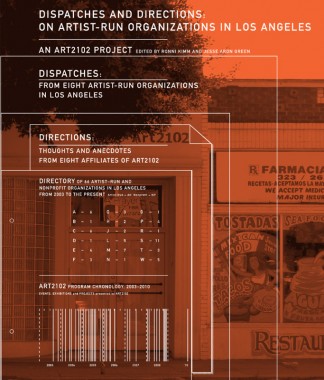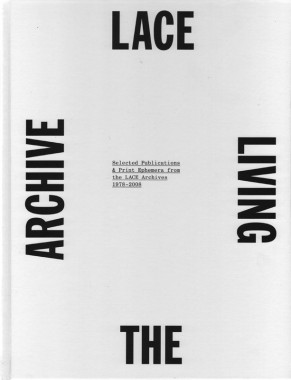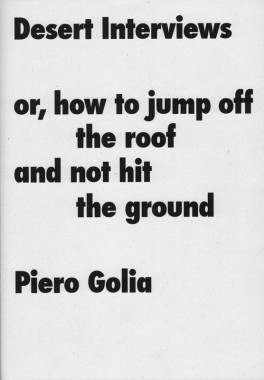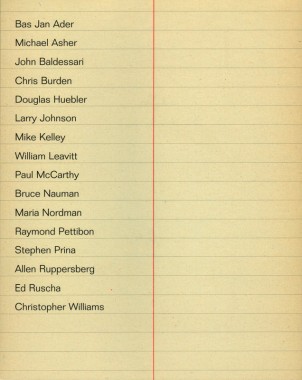Dispatches and Directions: On Artist-Run Organizations in Los Angeles
Dispatches and Directions: On Artist-Run Organizations in Los Angeles
Edited by Ronni Kimm and Jesse Aron Green
Softcover, 160 pp., offset 2/2, 9 x 9 inches [24 x 36 inches unfolded]
4 part book + poster
Edition of 500
ISBN 978-0-615-39970-6
Published by ART2102
$20.00 · out of stock
Dispatches and Directions, the final publication and project of ART2102, does not simply document this history, but also emulates the organization’s role as a platform and a network by spotlighting a number of the artists-run collaborations that are currently active in Los Angeles, and that will continue to thrive as ART2102 recedes. The publication not only provides a space in which these organizations can describe their work, but will also look at the legacy of ART2102 in light of the diverse range of programming emulated by these groups.
The publication, edited by Ronni Kimm and Jesse Aron Green, features contributions from various artist-run projects, including, Artist Curated Project, ESL, Genesis Project, Los Angeles, MATERIAL, Monte Vista, Slab, Telic Arts Exchange, Wildness. Also included are thoughts and anecdotes from Kate Fowle, Rika Hiro, Songmi Huff, Thomas Lawson, Paul McCarthy, Yoshua Okon, Renaud Proch and Erlea Maneros Zabala; an essay by Sarah Lehrer-Graiwer; a directory of over 60 artist-run and non profit organizations; and a specially commissioned “Star Chart” to help navigate the scene, by artist Jim Skuldt. The publication was designed in collaboration with Willem Henri Lucas.
Desert Interviews or, how to jump off the roof and not hit the ground
Piero Golia, Desert Interviews or, how to jump off the roof and not hit the ground
Softcover, 100 pp., offset 4/1, 148 x 210 mm
Edition of 2000
ISBN 978-3-03764-106-4
Published by JRP|Ringier
$28.00 ·
This book, composed of discussions between artists, presents a kind of report on this unique “institution:” teaching methods, academic syllabus, and students’ selection are here explained with metaphors, compared with artistic interaction, and equaled to performances. Not unlike Golia’s work itself, the development of the school and its program follow a poetic of the gesture, of the instant, and of actions recalling Fluxus, Gino de Dominicis’ or Paul McCarthy’s works.
As a career’s start, Piero Golia successfully convinced a woman to have his portrait and the words “Piero My Idol” tattooed on her back (tattoo, 2001); soon after, following an invitation to the Tirana Biennale, he rowed across the Adriatic Sea in the opposite direction to migratory movement to reach Albania (”Going to Tirana,” 2000). And, on January 14, 2005, Golia vanished from New York City leaving no documented proof of his whereabouts; he traveled from a place to another, crossing borders without a trace, for resurfacing only on the morning of February 7 at the Royal Academy of Arts in Copenhagen for a unique lecture about his adventurous trip. He now lives in Los Angeles, a place that blurs the boundaries between reality and fiction, making it the perfect setting for his exploration into the process of myth-making and his ironic outlook on contemporary society.
Art from Los Angeles: From the 60s-90s
Gregory Williams, Art from Los Angeles: From the 60s-90s
Softcover, 48 pp., offset 4/4, 215 x 270 mm
English and German
Edition of 2000
ISBN 9783865603241
Published by Walther König
$26.00 ·



